- Home
- Robert Silverberg
The Iron Chancellor
The Iron Chancellor Read online
The Iron Chancellor
The Galaxy Project
Robert Silverberg
Series Editor Barry N. Malzberg
Copyright
The Iron Chancellor
Copyright © 1958 by Galaxy Publishing Corporation, renewed 1986 by Agberg, Ltd.
THE IRON CHANCELLOR: Professionalism at the Level of Genius
Copyright © 2011 by David Drake
Jacket illustration copyright © 1951 by the Estate of Ed Emshwiller
Cover art to the electronic edition copyright © 2011 by RosettaBooks, LLC
Special materials copyright © 2011 by RosettaBooks, LLC
All rights reserved. No part of this book may be used or reproduced in any manner whatsoever without written permission except in the case of brief quotations embodied in critical articles and reviews.
Electronic edition published 2011 by RosettaBooks LLC, New York.
ISBN e-Pub edition: 9780795321771
Contents
About Galaxy Magazine
About Science Fiction Novelettes and Novellas
About the Author
About the Author of the eForeword
About the Jacket
eForeword
The Iron Chancellor
ABOUT GALAXY MAGAZINE
The first issue of Galaxy, dated October 1950, already heralded to the highest standards of the field. The authors it published regularly contributed to the leading magazine Astounding, writing a kind of elegant and humanistic science fiction which although not previously unknown had always been anomalous. Its founding editor, H. L. Gold (1914–1996), was a science fiction writer of some prominence whose editorial background had been in pulp magazines and comic books; however, his ambitions were distinctly literary, and he was deliberately searching for an audience much wider and more eclectic than the perceived audience of science fiction. His goal, he stated, was a magazine whose fiction “Would read like the table of contents of a literary magazine or The Saturday Evening Post of the 21st century, dealing with extrapolation as if it were contemporary.” The magazine, although plagued by distribution difficulties and an Italian-based publisher (World Editions), was an immediate artistic success, and when its ownership was transferred with the issue of August 1951 to its printer Robert M. Guinn, it achieved financial stability for the remainder of the decade.
Galaxy published every notable science fiction writer of its first decade and found in many writers who would become central figures: Robert Sheckley, James E. Gunn, Wyman Guin, and F. L. Wallace, among others. Galaxy revivified older writers such as Frederik Pohl and Alfred Bester (whose first novel, The Demolished Man, was commissioned and directed page by page by Gold). John Campbell fought with Astounding and remained an important editor, and The Magazine of Fantasy and Science Fiction (inaugurated a year before Galaxy) held to high standards of literary quality while spreading its contents over two fields, but Galaxy was incontestably the 1950s’ flagship magazine for the acidly satiric, sometimes profoundly comic aspect of its best contributions. Galaxy had a lasting effect not only upon science fiction but upon literature itself. J.G. Ballard stated that he had been deeply affected by Galaxy. Alan Arkin, an actor who became a star after 1960 and won an Oscar in the new millennium, contributed two stories in the mid-fifties.
At this point Gold was succumbing to agoraphobia, physical ills, and overall exhaustion (some of this perhaps attributable to his active service during WWII) against which he had struggled from the outset. (There is creditable evidence that Frederik Pohl was the de facto editor during Gold’s last years.) Gold would return some submissions with notes like: “Garbage,” “Absolute Crap.” Isaac Asimov noted in his memoir “Anthony Boucher wrote rejection slips which read like acceptances. And Horace wrote notes of acceptance which felt like rejections.” Despite this, the magazine retained most of its high standard and also some of its regular contributors (William Tenn, Robert Sheckley, Pohl himself). Others could no longer bear Gold’s imperiousness and abusiveness.
ABOUT SCIENCE FICTION NOVELETTES AND NOVELLAS
In the view of James E. Gunn, science fiction as a genre finds its peak in the novella (17,500–40,000 words) and novelette (7,500–17,500 words). Both forms have the length to develop ideas and characters fully but do not suffer from padding or the hortatory aspect present in most modern science fiction novels. The longer story-form has existed since science fictions inception with the April 1926 issue of Amazing Stories, but Galaxy developed the form to a consistent level of sophistication and efficiency and published more notable stories of sub-novel length than any other magazine during the 50s…and probably in any decade.
The novella and novelette as forms make technical and conceptual demands greater, perhaps even greater than the novel, and Galaxy writers, under founding editor H. L. Gold’s direction, consistently excelled in these lengths. Gold’s most memorable story, “A Matter of Form” (1938) was a long novelette, and he brought practical as well as theoretical lessons to his writers, who he unleashed to develop these ideas. (John Campbell of course, had also done this in the 40s and continued in the 50s to be a directive editor.) It is not inconceivable that many or even most of the contents of the 1950’s Galaxy were based on ideas originated by Gold: golden technology becomes brass and jails its human victims when it runs amok—is certainly one of his most characteristic.
ABOUT THE AUTHOR
Robert Silverberg (b. 1935) sold his first story to Nebula in 1954 and two years later won the Most Promising New Author Hugo Award. He published more than a dozen novels and several hundred short stories in the genre before 1960, and then embarked upon an early retreat, returning at an entirely new level of literary accomplishment in 1962 with the famous short story “To See The Invisible Man” (published in Galaxy’s sister magazine Worlds of Tomorrow). Over the next fourteen years, Silverberg produced in science fiction an unparalleled body of work at the height of literary achievement and conceptual rigor. Forty novels and three times as many short stories plumbed every aspect of science fiction and significantly advanced it: Born with the Dead, Dying Inside, The Book of Skulls, Thorns, The Stochastic Man, Up The Line, and finally Shadrach in the Furnace in 1976. He won every award in the field multiple times. After Shadrach, Silverberg went silent for two years, then returned with the long fantasy novel Lord Valentine’s Castle and went on to a major career in fantasy, while continuing to publish science fiction novels, three of them in collaboration with Isaac Asimov. He continued to win Hugo and Nebula Awards at the shorter lengths and published a dozen stories in Playboy. He has also edited notable anthologies such as The Science Fiction Hall Of Fame, Legends, and two Nebula Award annuals. A resident of California since the early seventies, Silverberg continues to write and edit prolifically. A novelette titled “The Way They Wove the Spells in Sippulgar” appeared in 2009 in the 60th anniversary issue of The Magazine of Fantasy and Science Fiction. Subterranean Press is publishing his science fiction short stories in several volumes.
ABOUT THE AUTHOR OF THE eFOREWORD
David Drake, a veteran of the Vietnam Tank Corps, is the author of the Hammers Slammers series which over the last quarter century has become the most successful military science fiction series in the history of the genre. He has also published many bestselling fantasy novels and short stories in Omni, Analog, and elsewhere.
ABOUT THE JACKET
COVER IMAGE: “Relics of an Ancient Race” by Ed Emshwiller
Ed Emshwiller (1925–1990) was Galaxy’s dominant artist through the 1950s. His quirky images, perspective, and off-center humor provide perhaps the best realization of the magazine’s iconoclastic, satirical vision. Emshwiller was—matched with Kelly Freas—science fiction’s signature artist thr
ough the decade and a half initiated by this color illustration. He and Carol Emshwiller, the celebrated science fiction writer, lived in Long Island during the period of his prominence in science fiction. (Nonstop Press published Emshwiller: Infinity X Two: The Art & Life of Ed and Carol Emshwiller, a joint biography and collection of their work in visual and literary medium, in 2007.) In the early 70s, Emshwiller became passionately interested in avant-garde filmmaking, and that passion led him to California, where he spent his last decades deeply involved in the medium of independent film and its community. He abandoned illustration: in Carol’s words “When Ed was through with something he was really through with it.” He died of cancer in 1990. His son, Peter Emshwiller, published a fair amount of science fiction in the 80s and 90s.
THE IRON CHANCELLOR: Professionalism at the Level of Genius
Robert Silverberg has been one of the most respected figures in the science fiction field since he sold his first story in 1954. The next year his first novel was published, and the year after that he won the Hugo Award for Best New Writer at the World Science Fiction Convention.
The science fiction field has changed a great deal since Silverberg entered it, and he has remained on top of it by changing also—more radically and more successfully than any other writer of his day. There have been three very different Robert Silverbergs writing science fiction, all of them the same man. Most recently—say, from the publication of Lord Valentine’s Castle in 1980—Silverberg has been the writer of sprawling, colorful fantasies. Highly literate and intelligent, these novels are calculated to leave readers with a good feeling. This is an amazing difference from the Silverberg of the 70s, who wrote some of the most brilliant and probing novels of the human mind, human cultures, and humanity itself ever published in the field. Silverberg’s focus was generally too tight for these novels to be called dystopian, but “bleak” is a fair (perhaps even mild) description of their spirit.
But the Robert Silverberg we have here, the Silverberg who wrote The Iron Chancellor, is the original model: a writer just starting out and rising immediately to the top, not only through native talent but also by the intelligent analysis of the field’s requirements and the professional execution of stories which met those requirements. Silverberg (writing to other professionals) gives his own description of his technique in the March 1961 issue of The Institute for Twenty-First Century Studies:
“A writer can make a great deal more money in New York than anywhere else, provided he’s the kind of writer who’ll write to editorial order.
“I am, of course.”
And:
“Since 1958 or so, 98% of my published material has been first-drafted. (And since 1958 I’ve sold 98% of the wordage I’ve offered for publication.)”
This Silverberg was omnipresent in the magazines of his day not because he wrote vast quantities of material daily, but because he wrote precisely what a particular editor was looking for. Note here that the basic requirement which every editor needs is work of publishable quality: editorial foibles and slants are secondary. Silverberg’s work was always of publishable quality straight from the typewriter.
Super-Science Fiction (SSF) is not a well-known magazine today, but in the late ’50s its word rate was bettered in the field only by Astounding and Galaxy (the top markets in prestige as well as payment). Harlan Ellison, a regular in SSF, described its editorial requirement as “puerility,” and Algis Budrys accused W. W. Scott, the editor, of harming the field because he paid so well. Silverberg had a story in every issue of SSF except the second, in which he had an article. Furthermore, he had two or three stories (under various pen names) in most issues. He was making a very good living instead of complaining about the situation. I want to emphasize that these were good stories. If Scott wanted monsters (the last four issues of SSF had an all-monster theme), Silverberg provided horrible, ravening monsters—but there was also real tension, real characterization, and a solid structure to the stories in which those monsters appeared.
Occasionally there are aspects which might cause a reader today to blink. Silverberg wrote “The Loathsome Beasts” as Dan Malcolm for the October 1959 SSF (one of his two stories in that issue). The story is set on a recently colonized planet, but one doesn’t have to look very hard to realize that the monsters which are horrifically crushing and dismembering the happy crowd on the beach are really giant six-legged sea turtles. After the carnage, the hero realizes that the solution is to dig up the turtles’ egg clutches and drive the species to quick extinction.
This brings up a second critical point: not only are stories written for editors, they are written in—and effectively set in—their own times. I don’t believe writers can avoid discussing their own present in their fiction, whatever their pretended past or future settings. Even someone who quarrels with that opinion will admit that writers cannot sell stories to popular magazines that do not address the concerns of the people reading those magazines.
The Iron Chancellor is set in 2060 AD, but it appeared in the May 1958 issue of Galaxy, and the concerns of the characters are those of a suburban family of 1958. The surface concern is dieting (exercise as a way to control weight is dismissed with barely a nod), but the underlying theme of the story is a fear that at the time was second only to nuclear holocaust: The Machines Are Taking Over.
The Iron Chancellor is an example of Silverberg writing a story for H. L. Gold, the most respected editor in the science fiction field, and for Galaxy, the most admired magazine in the science fiction field. I will stand by those statements, but both require qualification: Galaxy and Astounding were by general agreement at the top of the field (and paid more, sometimes considerably more, than the other science fiction magazines), but they were at opposite poles from one another.
In the 1950s, Astounding, under John W. Campbell, published excellent stories by excellent writers, but the magazine’s emphasis was on continuity with its past. The Golden Age of Science Fiction, as it is described now, was basically a creation of Astounding in the late 30s/early 40s, so there’s nothing intrinsically wrong with this continuity; but it would be fair to say that by the 50s Astounding lacked excitement.
Galaxy made waves before the first issue appeared in October 1950 because Gold was offering a higher word rate than ever before seen in the field. (Campbell, complaining, was forced to raise Astounding’s rate to match.) More important, Gold emphasized change rather than continuity, boasting that Galaxy would be like no previous science fiction magazine. Despite cavils (at the time as well as later), Galaxy pretty well justified that boast.
But while Gold was unquestionably respected, he was the most generally execrated editor in the field also. He had a vision for Galaxy, and he was determined to make every story in the magazine conform to his vision. He edited stories ruthlessly, no matter who the writer was, and if the writers didn’t like it, they could go elsewhere. He preferred colorful extrapolation, even wild extrapolation, to plodding realism: if people wanted a magazine edited by an engineer for engineers, they could read Astounding. Writers claimed Gold was whimsical, but the consistency—and consistent excellence—of Galaxy while he was editor make that unlikely. It may be that Gold’s editing—meddling, some called it—made some stories less good than they would otherwise have been, but all one can say with certainty is that those stories differed from their writers’ conceptions when they appeared in Galaxy.
Silverberg didn’t complain: he wrote. The Iron Chancellor is witty, wryly humorous, and crisply written, making it a perfect example of a Galaxy story. The themes are addressed with skill; the characters are believable within the context of a satirical story; and the plot twists, twists again, and ends on a mordant note.
It is precisely the sort of story that a professional writer of genius would sell to Galaxy.
—David Drake
The Iron Chancellor
The Carmichaels were a pretty plump family, to begin with. Not one of the four of them couldn’t stand to shed quite a few p
ounds. And there happened to be a superspecial on roboservitors at one of the Miracle Mile roboshops—40% off on the 2061 model, with adjustable caloric-intake monitors.
Sam Carmichael liked the idea of having his food prepared and served by a robot who would keep one beady solenoid eye on the collective family waistline. He squinted speculatively at the glossy display model, absentmindedly slipped his thumbs beneath his elastobelt to knead his paunch, and said, “How much?”
The salesman flashed a brilliant and probably synthetic grin. “Only two thousand nine hundred ninety-five, sir. That includes free service contract for the first five years. Only two hundred credits down and up to forty months to pay.”
Carmichael frowned, thinking of his bank balance. Then he thought of his wife’s figure, and of his daughter’s endless yammering about her need to diet. Besides, Jemima, their old robocook, was shabby and gear-stripped, and made a miserable showing when other company executives visited them for dinner.
“I’ll take it,” he said.
“Care to trade in your old robocook, sir? Liberal trade-in allowances—”
“I have a ’43 Madison.” Carmichael wondered if he should mention its bad arm libration and serious fuel-feed overflow, but decided that would be carrying candidness too far.
“Well—ah—I guess we could allow you fifty credits on a ’43, sir. Seventy-five, maybe, if the recipe bank is still in good condition.”
“Excellent condition.” That part was honest—the family had never let even one recipe wear out. “You could send a man down to look her over.”
“Oh, no need to do that, sir. We’ll take your word. Seventy-five, then? And delivery of the new model by this evening?”

 The Longest Way Home
The Longest Way Home Hawksbill Station
Hawksbill Station A Time of Changes
A Time of Changes This Way to the End Times: Classic Tales of the Apocalypse
This Way to the End Times: Classic Tales of the Apocalypse Beyond the Gate of Worlds
Beyond the Gate of Worlds Lord Valentine's Castle
Lord Valentine's Castle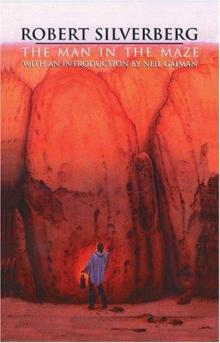 The Man in the Maze
The Man in the Maze Tales of Majipoor
Tales of Majipoor Time of the Great Freeze
Time of the Great Freeze The Collected Stories of Robert Silverberg, Volume 3: Something Wild Is Loose: 1969-72
The Collected Stories of Robert Silverberg, Volume 3: Something Wild Is Loose: 1969-72 Planet of Death
Planet of Death Trips: The Collected Stories of Robert Silverberg, Volume Four
Trips: The Collected Stories of Robert Silverberg, Volume Four In the Beginning: Tales From the Pulp Era
In the Beginning: Tales From the Pulp Era Hot Sky at Midnight
Hot Sky at Midnight Valentine Pontifex
Valentine Pontifex Up the Line
Up the Line Thorns
Thorns Amanda and the Alien
Amanda and the Alien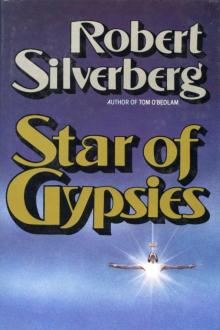 Star of Gypsies
Star of Gypsies Nightwings
Nightwings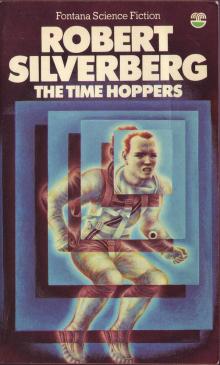 The Time Hoppers
The Time Hoppers Blood on the Mink
Blood on the Mink Dying Inside
Dying Inside The Last Song of Orpheus
The Last Song of Orpheus The King of Dreams
The King of Dreams The Stochastic Man
The Stochastic Man The Collected Stories of Robert Silverberg, Volume Seven: We Are for the Dark
The Collected Stories of Robert Silverberg, Volume Seven: We Are for the Dark The Millennium Express: The Collected Stories of Robert Silverberg, Volume Nine
The Millennium Express: The Collected Stories of Robert Silverberg, Volume Nine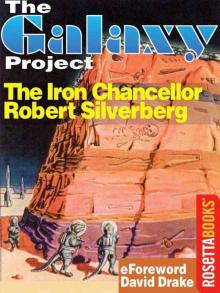 The Iron Chancellor
The Iron Chancellor Lord Prestimion
Lord Prestimion To Open the Sky
To Open the Sky The World Inside
The World Inside Chains of the Sea
Chains of the Sea The Collected Stories of Robert Silverberg, Volume Five: The Palace at Midnight
The Collected Stories of Robert Silverberg, Volume Five: The Palace at Midnight Postmark Ganymede
Postmark Ganymede The Second Trip
The Second Trip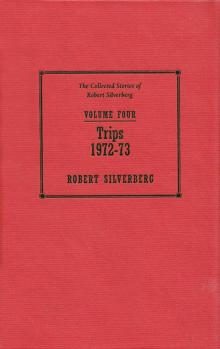 The Collected Stories of Robert Silverberg, Volume 4: Trips: 1972-73
The Collected Stories of Robert Silverberg, Volume 4: Trips: 1972-73 Son of Man
Son of Man Tom O'Bedlam
Tom O'Bedlam To the Land of the Living
To the Land of the Living To Be Continued: The Collected Stories of Robert Silverberg, Volume One
To Be Continued: The Collected Stories of Robert Silverberg, Volume One Shadrach in the Furnace
Shadrach in the Furnace The Chalice of Death: Three Novels of Mystery in Space
The Chalice of Death: Three Novels of Mystery in Space The Queen of Springtime
The Queen of Springtime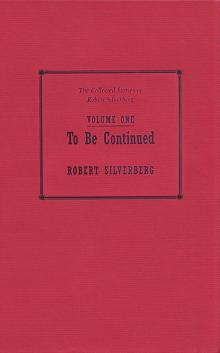 To Be Continued 1953-1958
To Be Continued 1953-1958 Legends
Legends Roma Eterna
Roma Eterna To Live Again
To Live Again At Winter's End
At Winter's End Needle in a Timestack
Needle in a Timestack To Live Again and the Second Trip: The Complete Novels
To Live Again and the Second Trip: The Complete Novels Lord of Darkness
Lord of Darkness The Mountains of Majipoor
The Mountains of Majipoor The World Outside
The World Outside The Alien Years
The Alien Years The Book of Skulls
The Book of Skulls The Face of the Waters
The Face of the Waters Gilgamesh the King
Gilgamesh the King The Collected Stories of Robert Silverberg, Volume 6: Multiples: 1983-87
The Collected Stories of Robert Silverberg, Volume 6: Multiples: 1983-87 The Happy Unfortunate
The Happy Unfortunate Three Survived
Three Survived Cronos
Cronos Tower of Glass
Tower of Glass Legends II
Legends II The Planet Killers
The Planet Killers The Collected Stories of Robert Silverberg, Volume 2: To the Dark Star: 1962-69
The Collected Stories of Robert Silverberg, Volume 2: To the Dark Star: 1962-69 Downward to the Earth
Downward to the Earth Lord Valentine's Castle: Book One of the Majipoor Cycle
Lord Valentine's Castle: Book One of the Majipoor Cycle Hot Times in Magma City, 1990-95
Hot Times in Magma City, 1990-95 Hunt the Space-Witch! Seven Adventures in Time and Space
Hunt the Space-Witch! Seven Adventures in Time and Space Majipoor Chronicles
Majipoor Chronicles The Robert Silverberg Science Fiction Megapack(r)
The Robert Silverberg Science Fiction Megapack(r) Starman's Quest
Starman's Quest Car Sinister
Car Sinister Worlds of Maybe
Worlds of Maybe Fantasy The Best of 2001
Fantasy The Best of 2001 Revolt on Alpha C
Revolt on Alpha C Homefaring
Homefaring The Pardoner's Tale
The Pardoner's Tale Sailing to Byzantium - Six Novellas
Sailing to Byzantium - Six Novellas The Chalice of Death
The Chalice of Death Sundance
Sundance A Tip on a Turtle
A Tip on a Turtle Nebula Awards Showcase 2001: The Year's Best SF and Fantasy Chosen by the Science Fiction and Fantasy Writers of America
Nebula Awards Showcase 2001: The Year's Best SF and Fantasy Chosen by the Science Fiction and Fantasy Writers of America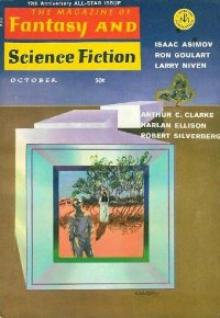 The Fangs of the Trees
The Fangs of the Trees The Palace at Midnight: The Collected Work of Robert Silverberg, Volume Five
The Palace at Midnight: The Collected Work of Robert Silverberg, Volume Five The Millennium Express - 1995-2009 - The Collected Stories of Robert Silverberg Volume Nine
The Millennium Express - 1995-2009 - The Collected Stories of Robert Silverberg Volume Nine Book of Skulls
Book of Skulls Passengers
Passengers Something Wild is Loose - 1969–72 - The Collected Stories of Robert Silverberg Volume Three
Something Wild is Loose - 1969–72 - The Collected Stories of Robert Silverberg Volume Three Multiples
Multiples Starborne
Starborne The Masks of Time
The Masks of Time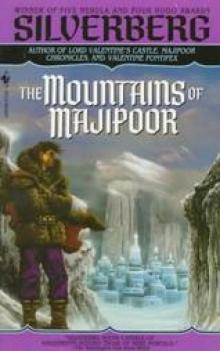 The Mountains of Majipoor m-8
The Mountains of Majipoor m-8 Multiples (1983-87)
Multiples (1983-87) Those Who Watch
Those Who Watch In the Beginning
In the Beginning Earth Is The Strangest Planet
Earth Is The Strangest Planet Collision Course
Collision Course Neutral Planet
Neutral Planet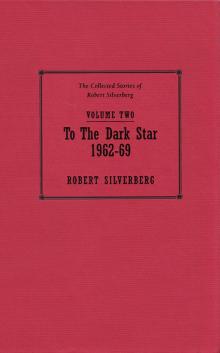 To the Dark Star - 1962–69 - The Collected Stories of Robert Silverberg Volume Two
To the Dark Star - 1962–69 - The Collected Stories of Robert Silverberg Volume Two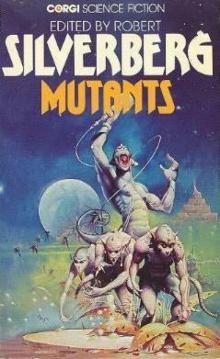 Mutants
Mutants Sailing to Byzantium
Sailing to Byzantium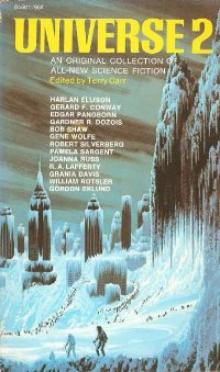 When We Went to See the End of the World
When We Went to See the End of the World Robert Silverberg The Science Fiction Hall Of Fame Volume One, 1929-1964
Robert Silverberg The Science Fiction Hall Of Fame Volume One, 1929-1964 To Be Continued - 1953–58 - The Collected Stories of Robert Silverberg Volume One
To Be Continued - 1953–58 - The Collected Stories of Robert Silverberg Volume One Valentine Pontifex m-3
Valentine Pontifex m-3 Gianni
Gianni Majipoor Chronicles m-2
Majipoor Chronicles m-2 We Are for the Dark (1987-90)
We Are for the Dark (1987-90) Waiting for the Earthquake
Waiting for the Earthquake Fantasy: The Best of 2001
Fantasy: The Best of 2001 How It Was When the Past Went Away
How It Was When the Past Went Away Beauty in the Night
Beauty in the Night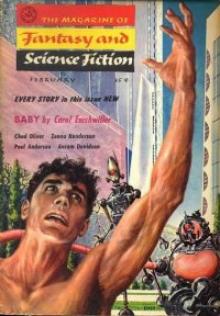 The Man Who Never Forgot
The Man Who Never Forgot The Book of Changes m-9
The Book of Changes m-9 Lord Valentine's Castle m-1
Lord Valentine's Castle m-1 This Way to the End Times
This Way to the End Times Queen of Springtime
Queen of Springtime Legends-Volume 3 Stories by the Masters of Modern Fantasy
Legends-Volume 3 Stories by the Masters of Modern Fantasy The Palace at Midnight - 1980–82 - The Collected Stories of Robert Silverberg Volume Five
The Palace at Midnight - 1980–82 - The Collected Stories of Robert Silverberg Volume Five Something Wild is Loose: The Collected Stories of Robert Silverberg, Volume Three
Something Wild is Loose: The Collected Stories of Robert Silverberg, Volume Three Multiples - 1983–87 - The Collected Stories of Robert Silverberg Volume Six
Multiples - 1983–87 - The Collected Stories of Robert Silverberg Volume Six Alaree
Alaree Three Survived: A Science Fiction Novel
Three Survived: A Science Fiction Novel Defenders of the Frontier
Defenders of the Frontier The New Springtime
The New Springtime We Are for the Dark - 1987–90 - The Collected Stories of Robert Silverberg Volume Seven
We Are for the Dark - 1987–90 - The Collected Stories of Robert Silverberg Volume Seven The Science Fiction Hall of Fame, Volume One 1929-1964--The Greatest Science Fiction Stories of All Time Chosen by the Members of the Science Fiction Writers of America
The Science Fiction Hall of Fame, Volume One 1929-1964--The Greatest Science Fiction Stories of All Time Chosen by the Members of the Science Fiction Writers of America Master Of Life And Death
Master Of Life And Death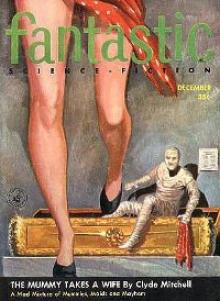 Choke Chain
Choke Chain Sorcerers of Majipoor m-4
Sorcerers of Majipoor m-4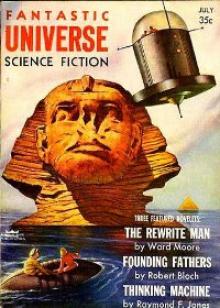 Absolutely Inflexible
Absolutely Inflexible Trips - 1962–73 - The Collected Stories of Robert Silverberg Volume Four
Trips - 1962–73 - The Collected Stories of Robert Silverberg Volume Four Hot Times in Magma City - 1990-95 - The Collected Stories of Robert Silverberg Volume Eight
Hot Times in Magma City - 1990-95 - The Collected Stories of Robert Silverberg Volume Eight Far Horizons
Far Horizons The Queen of Springtime ns-2
The Queen of Springtime ns-2 The Seventh Science Fiction Megapack
The Seventh Science Fiction Megapack Invaders From Earth
Invaders From Earth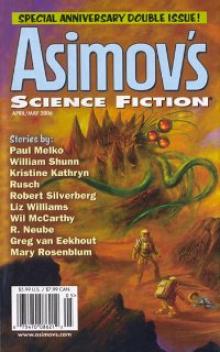 Hanosz Prime Goes To Old Earth
Hanosz Prime Goes To Old Earth The Macauley Circuit
The Macauley Circuit Science Fiction: The Best of 2001
Science Fiction: The Best of 2001 To the Dark Star: The Collected Stories of Robert Silverberg, Volume Two
To the Dark Star: The Collected Stories of Robert Silverberg, Volume Two Stochastic Man
Stochastic Man Legends: Stories By The Masters of Modern Fantasy
Legends: Stories By The Masters of Modern Fantasy To Live Again And The Second Trip
To Live Again And The Second Trip Flies
Flies The Silent Invaders
The Silent Invaders Ship-Sister, Star-Sister
Ship-Sister, Star-Sister